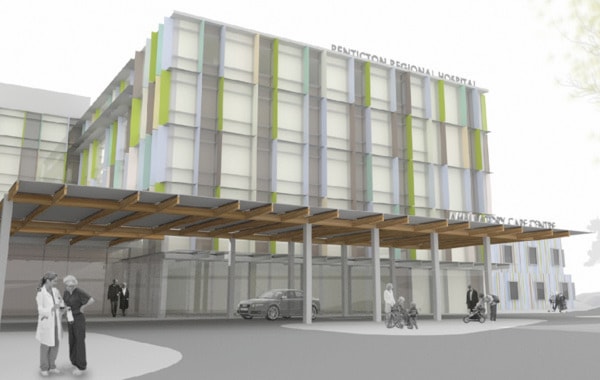The expansion of Penticton Regional Hospital is one step closer to reality after city council passed a zoning amendment Monday evening to make room for the new structure.
It’s not unusual for zoning changes and the associated public hearings to be lengthy, contentious matters at city council, but this change for 550 Carmi Ave. passed with smiles replacing the arguments.
“Your presentation gives me goose bumps,” said Mayor Garry Litke to proponents Doug McLaughlin, representing the architects IBI Group and David Fowler, Interior Health’s senior planner for the Penticton project.
The zoning amendment was necessary because at 39.2 metres, the new six-storey tower far exceeds both the 12 metres allowed under current zoning and the 20.1 metre height of the existing building.
Count. Judy Sentes said that small steps like the zoning change, which passed unanimously, give people hope the expanded facilities are on their way.
“It’s been a dream for so long that each step is closer to reality,” said Sentes.
Along with details on the height of the project, council got a breakdown from McLaughlin on the current state of planning. If all goes well, he said, the construction group should be ready for the design and construction phase in early 2016.
The new patient care tower will be located to the east of the hospital, in the area currently occupied by the parking lot off Government Street. The loss of parking will be more than made up for by a 480-stall parking garage planned as part of the structure.
All together, the new tower will add about 28,000 square metres to the hospital, more than doubling the existing 25,923 square-metres of floor space.
The lowest level would contain items like medical gas storage, emergency generators, and space for UBC Faculty of Medicine, which will maintain a presence there.
Level One and Two contain the ambulatory care clinic, diagnostic imaging, operating rooms and other surgical services.
Level 3 is mechanical equipment, while Level 4, 5 and 6 would have 28 inpatient beds each.
According to the design shown to council, the top level would contain more mechanical and have a helipad.
“It has taken a long time to get to this stage,” said Janice Perrino, chair of the Okanagan-Similkameen Regional Hospital District board. “But that’s OK, at least it’s coming. We all knew that once they gave agreement, it was still going to be five years from that date.”
